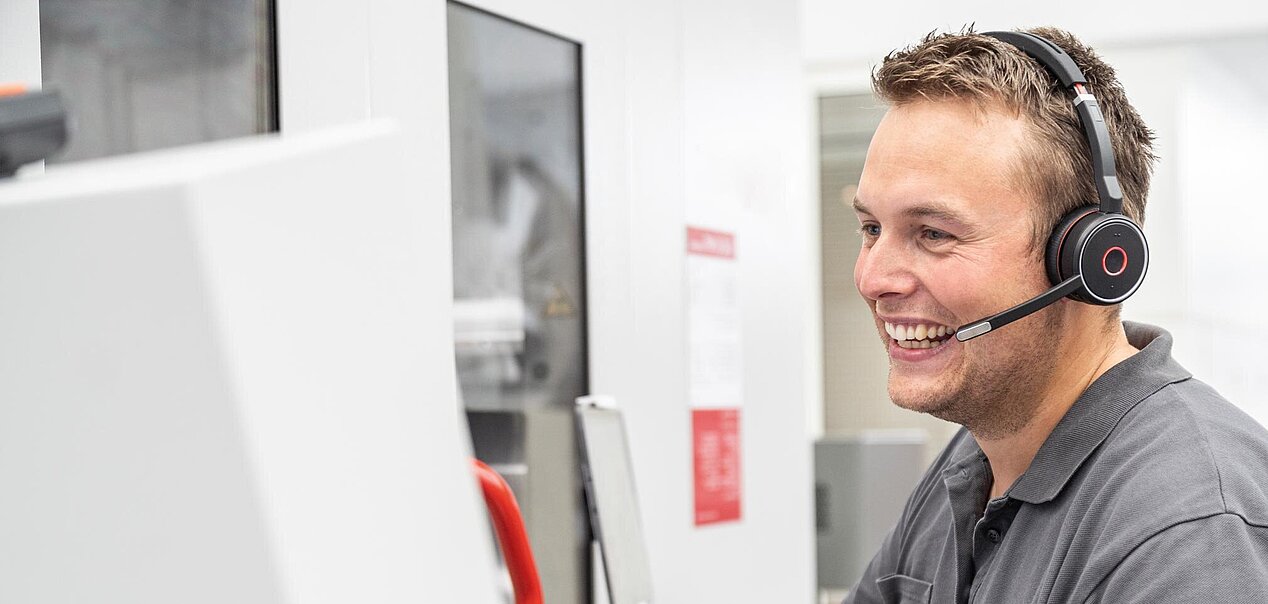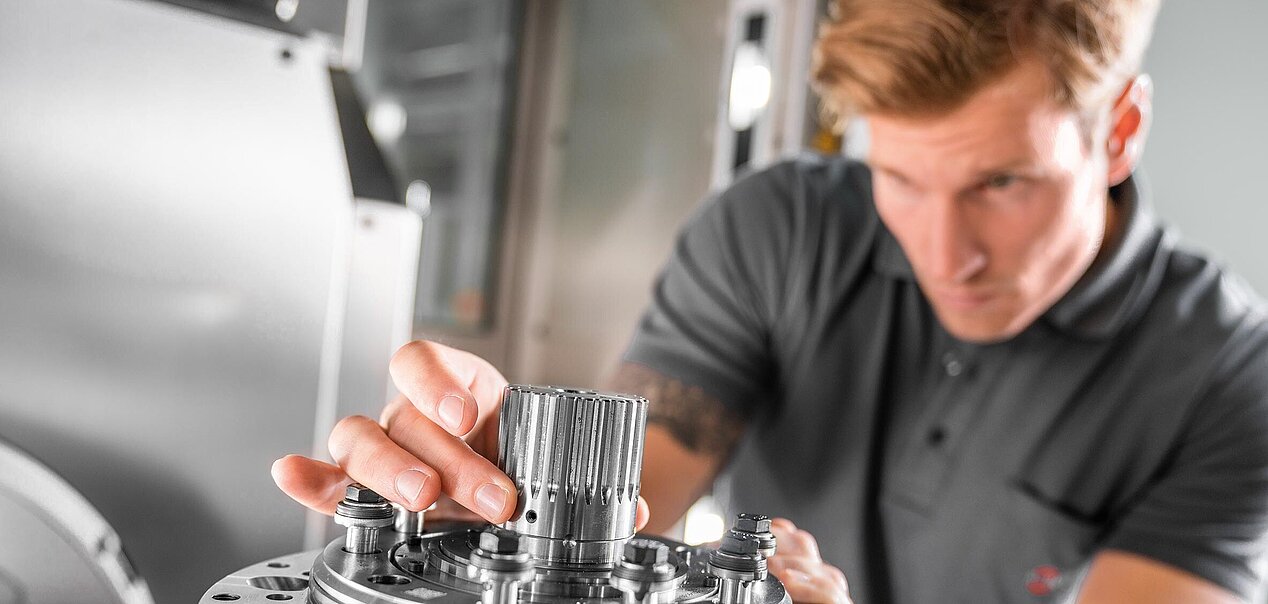C 42 U RS 2 L | Hofmann | Tool & mold making
The challenge: The hardened material required extremely steady machines operating within the narrow tolerances even after finish-machining of 50 hours. Hermle is the ideal partner to satisfy this requirement for the tool and machine builder Hofmann. Together they shouldered an exceptional project creating more capacities than expected: A production cell with four milling machines of the C 42 U type including a cleaning and measuring system linked by a robot.
The technological frontrunner in the toolmaking and machine building industry developed from a craft business for moulding tools founded in 1958 by Siegfried Hofmann in a garden house. The major driver in the 1980s was the son of the company's founder: Günter Hofmann joined the corporate management of Werkzeugbau Siegfried Hofmann GmbH in 1982 and in parallel successfully developed the field of standard and special machine building. The company today is managed by Stefan Hofmann as the third generation and offers holistic solutions in injection moulding from the tool up to complete automation of the injection moulding process. In addition Hofmann focuses on digital solutions and virtual commissioning, and digital twins in the development and manufacturing of machines and automation solutions.
The injection moulds and machines today produced by the family-owned business from Lichtenfels in Upper Franconia are just as diverse as the industries in which the service provider has a reputation: Household appliances, automotive, packaging and sports equipment get their perfect appearance and function thanks to the precise moulds. A unique feature of the toolmaker is its intensive research and development work. With partners from the industrial and scientific fields the experts utilise their skills for new technologies and material combinations and implement for example innovative design geometries by 3D printing.
Error-free data flow throughout the manufacturing process
"For us it is important to stand technologically at the forefront," Markus Gräf, Head of Process Development at Werkzeugbau Siegfried Hofmann GmbH sais. The driving issue both in machine building and in toolmaking is automation. It sounds trivial but it is not because mould-making is actually pure craftsmanship. "Usually the moulding tools are unique objects of which we only make one, and maximally two. It is a big challenge to automate this," Gräf emphasises. The company successfully faces this mammoth task for some years now: When a new moulding tool is ordered after design, the central MES system assigns the appropriate data for the respective machining steps to the different workstations. It also organises the data feedbacks from the measuring operations, for example, which are automatically fed back to the system – that way typing errors are almost excluded. "Our production is paperless for 15 years already. However, much development work had been necessary until the data flow was reliably transported through manufacturing," Gräf admits. But the effort paid off. "Up to 100 hours of pure machining time are often invested in a single workpiece which is correspondingly expensive. Every source of error may become a cost driver."
To optimise also the machining of the mouldings, Hofmann invested in two C 50 U from Maschinenfabrik Berthold Hermle AG automated by a RS 3 robot system in 2013. "For 20 years now we are producing with Hermle machines and know that we can both rely on precision as well as on the Service and Support," Markus Gräf explains. He also emphasises the cooperative relationship with the Gosheim machine builder which manifests in active openness, honesty and trust.
Automation for ultra-precise individual components
When Hofmann intended to expand its manufacturing capacity in 2017, the decision makers again opted for an automation solution from Hermle: A linear system with a robot and four C 42 U. "it fitted exactly in the building," the Head of Development jokes and explains that the 5-axis machining centres have the relatively largest traverse path for the size of the machines and are optimally suited for the parts range. "In addition there are very few systems on the market that are able to machine 3D contours from hardened steel with this precision.“ And this is what matters. On the four C 42 U machines only the hardened mouldings are finish-machined, with the machines finally defining the precision of the finished moulding. "This step takes between one and 50 hours and this is why we need a machine which keeps precision and accuracy constant throughout this long time, regardless of the ambient influences such as temperature or coolants used," Gräf emphasises.
But the system is capable of even more: A cleaning and measuring centre is integrated in the cell in addition to the four machining centres. Here the finished mouldings are fully automatic washed, dried and finally measured and thus checked. The entire system is integrated in Hofmann's MES system and therefore it is possible that the production system can be supplied with data fully automated as well as manually.






